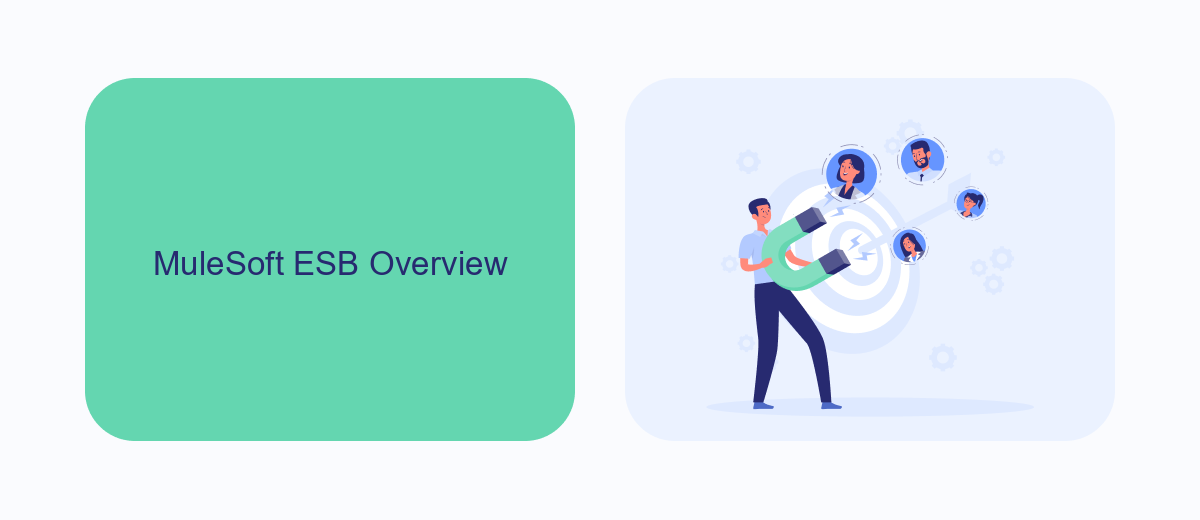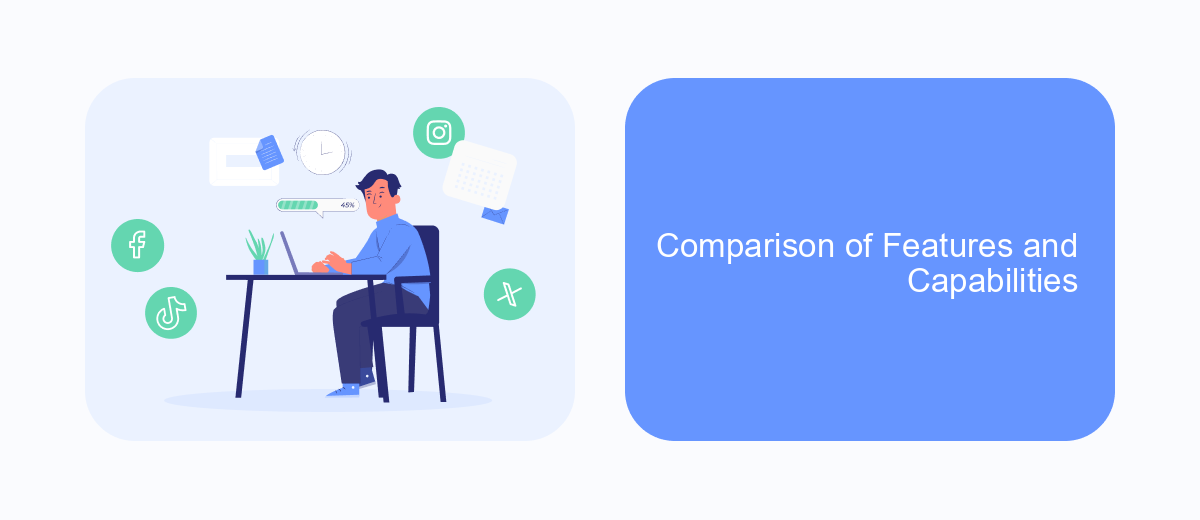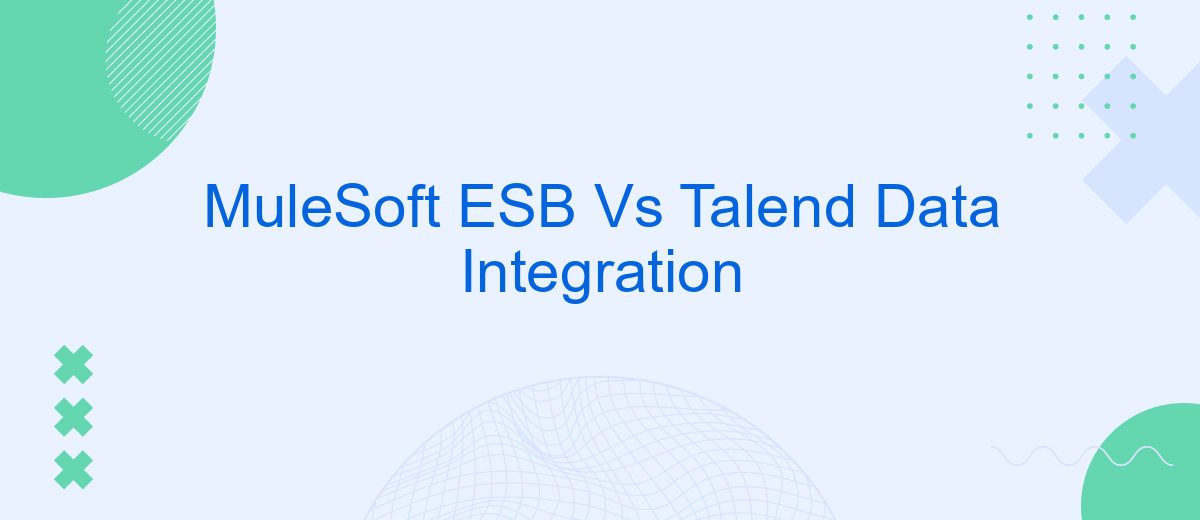In the rapidly evolving landscape of data integration and enterprise service bus (ESB) solutions, MuleSoft and Talend stand out as prominent contenders. This article delves into a comparative analysis of MuleSoft ESB and Talend Data Integration, examining their core features, strengths, and weaknesses to help organizations make informed decisions on which platform best suits their integration needs.
Introduction
In today's rapidly evolving digital landscape, businesses require robust and efficient solutions to manage their data integration needs. MuleSoft ESB (Enterprise Service Bus) and Talend Data Integration are two prominent platforms that offer comprehensive tools for integrating various systems and applications. These platforms play a crucial role in ensuring seamless data flow and operational efficiency.
- MuleSoft ESB: Known for its strong API management and connectivity capabilities.
- Talend Data Integration: Recognized for its extensive ETL (Extract, Transform, Load) features and open-source flexibility.
Both MuleSoft ESB and Talend Data Integration have their unique strengths and cater to different integration requirements. While MuleSoft excels in API-led connectivity, Talend stands out with its powerful data transformation tools. Understanding the key differences and advantages of each platform is essential for businesses to make informed decisions. Additionally, services like SaveMyLeads can further streamline the integration process by automating data workflows, thus enhancing productivity and accuracy.
MuleSoft ESB Overview

MuleSoft ESB (Enterprise Service Bus) is a powerful integration platform that allows enterprises to connect applications, data, and devices seamlessly. It provides a unified, flexible solution for API-led connectivity, enabling organizations to build and manage APIs and integrations with ease. MuleSoft ESB supports various integration patterns, including service orchestration, message routing, and data transformation, making it an ideal choice for complex enterprise environments. Its robust runtime engine, Mule, ensures high performance and reliability, while the Anypoint Platform offers comprehensive tools for design, development, and monitoring of integrations.
One of the key advantages of MuleSoft ESB is its ability to integrate with a wide range of systems and technologies, both on-premises and in the cloud. This is particularly beneficial for businesses looking to streamline their operations and improve efficiency. Additionally, services like SaveMyLeads can further enhance the integration process by automating data transfers between various platforms, ensuring that critical information is always up-to-date. This combination of MuleSoft ESB and complementary services provides a scalable and efficient solution for modern enterprises seeking to optimize their integration strategies.
Talend Data Integration Overview

Talend Data Integration is a powerful tool designed to simplify and streamline the process of data integration across various systems and platforms. It provides a comprehensive suite of tools for data profiling, cleansing, and transformation, making it easier for businesses to manage their data efficiently. With its user-friendly interface and robust features, Talend Data Integration is suitable for both technical and non-technical users.
- Data Profiling: Talend allows users to analyze data quality and identify potential issues.
- Data Cleansing: It offers tools to clean and standardize data, ensuring consistency and accuracy.
- Data Transformation: Users can transform data into the desired format for seamless integration.
- Job Design: The drag-and-drop interface simplifies the creation of complex data workflows.
- Scalability: Talend supports large-scale data integration projects, making it suitable for enterprises.
Talend Data Integration also supports the integration of various third-party services, such as SaveMyLeads, to further enhance its capabilities. SaveMyLeads automates the process of capturing and transferring leads from different sources, reducing manual effort and improving efficiency. This integration ensures that businesses can maintain a seamless flow of data across all their systems.
Comparison of Features and Capabilities

MuleSoft ESB and Talend Data Integration are two prominent tools in the data integration landscape, each with its own set of features and capabilities. MuleSoft ESB is known for its robust API-led connectivity, while Talend excels in data transformation and big data integration.
Both platforms offer extensive support for cloud and on-premises deployments, but they differ in their approach to integration. MuleSoft ESB provides a comprehensive suite for API management, which is essential for modern microservices architectures. Talend, on the other hand, focuses on providing a user-friendly interface for data integration, making it accessible to a broader range of users.
- API Management: MuleSoft ESB offers advanced API management features.
- Data Transformation: Talend excels in complex data transformation tasks.
- Cloud Integration: Both platforms support cloud integration, but MuleSoft ESB has a slight edge.
- User Interface: Talend is more user-friendly for non-technical users.
- Third-Party Integrations: Tools like SaveMyLeads can enhance integration capabilities for both platforms.
In summary, the choice between MuleSoft ESB and Talend Data Integration depends on your specific needs. If your focus is on API management and microservices, MuleSoft ESB is a strong contender. For data transformation and ease of use, Talend is an excellent choice.
Conclusion: Choosing the Right Solution
When deciding between MuleSoft ESB and Talend Data Integration, it is crucial to evaluate your specific business needs and technical requirements. MuleSoft ESB excels in providing comprehensive API management and connectivity capabilities, making it a strong choice for enterprises looking to streamline their API-driven integrations. On the other hand, Talend Data Integration offers robust data processing and transformation features, which are ideal for organizations focusing on data-centric projects.
Additionally, integrating services like SaveMyLeads can further enhance your integration strategy by automating data flows and reducing manual effort. SaveMyLeads provides a user-friendly interface and pre-built connectors, enabling you to quickly set up integrations without extensive coding. Ultimately, the right solution will depend on your organization's priorities, whether they lie in API management, data integration, or a combination of both. Carefully assess the strengths of each platform and consider leveraging complementary tools to achieve optimal results.


FAQ
What are the main differences between MuleSoft ESB and Talend Data Integration?
Which tool is better for real-time data integration?
How does the learning curve compare between MuleSoft ESB and Talend Data Integration?
Can both MuleSoft ESB and Talend Data Integration handle cloud-based integrations?
What are some options for automating and setting up integrations with these tools?
Use the SaveMyLeads service to improve the speed and quality of your Facebook lead processing. You do not need to regularly check the advertising account and download the CSV file. Get leads quickly and in a convenient format. Using the SML online connector, you can set up automatic transfer of leads from Facebook to various services: CRM systems, instant messengers, task managers, email services, etc. Automate the data transfer process, save time and improve customer service.
